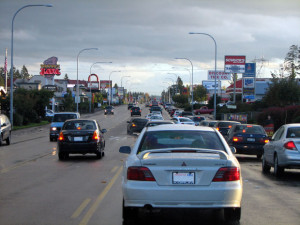In some Fort Myers car accident lawsuits, defendants will allege injuries or damages incurred by plaintiff were not as serious as he or she has stated because the crash was low-impact. 
However, just because a crash happened at a relatively low speed does not mean serious injury is an impossibility. Consider that:
- A typical automobile weighs about 2,000 pounds;
- A collision at 10 miles-per-hour is going to result in an average impact force of 3.7 tons;
- A 3,000-pound vehicle striking at 10 mph is going to result in a force of impact of about 5.6 tons.
The force of impact to one’s back and neck is significant. Plus, when a person is involved in a rear-end accident, it’ s important to understand a physics principle known as “magnification of acceleration.” What that means is the occupants of a vehicle are going to accelerate a lot faster than the car that is impacted, which means they are going to absorb much more of the force. So even a low-impact crash can result in substantial injuries.
In the recent case of Rish v. Simao, plaintiffs were suing a driver who rear-ended them in stop-and-go traffic. The damage to both vehicles was minimal. An ambulance was called, but both drivers declined emergency medical treatment at the scene.
However, plaintiff would later allege shortly after the crash, he began suffering constant pain in his head and neck. This required him to receive on-going medical treatment and procedures.
Plaintiff filed a personal injury lawsuit against defendant for injuries he suffered as a result of the car accident.
The defense sought to present a “low-impact defense.”
However, prior to trial, plaintiff filed a motion in limine, asking the court to preclude defendant, her attorneys, her medical expert or her witnesses from testifying or insinuating that the crash was too insignificant to cause plaintiff’s injuries. Plaintiff asserted any argument or evidence that the crash was low-impact should be stricken because defendant failed to retain a biomechanical engineer who could testify about why the force of the crash was too insignificant to cause injury. Repair invoices and photos of the vehicle, plaintiff alleged, should also be banned because without the expert testimony to support this assertion, there wasn’t any reliable correlation between the seriousness of the injury and the extent of the damage.
The district court granted this request, citing the previous Nevada Supreme Court case of Hallmark v. Eldridge, which the court said set a precedent in requiring a qualified biomechanical engineer to testify in low-impact crash cases.
Pursuant to this order and during the trial, the court sustained eight objections to testimony and introduction of defense evidence related to this motion in limine. When defense again referenced the low-impact nature of the crash, the trial court sanctioned defense with a default judgment against defendant.
Defense appealed and the Nevada Supreme Court reversed.
The court pointed out that in the Hallmark case, the issue was whether the biomechanical engineer who was testifying in a low-impact crash case was qualified to do so – and the court had concluded he was not. However, that ruling was not to be interpreted to mean that all defendants in low-impact crash cases were required to present expert witness testimony from a biomechanical engineer.
The case has been remanded for re-trial.
Call Associates and Bruce L. Scheiner, Attorneys for the Injured, at 1-800-646-1210.
Additional Resources:
Rish v. Simao, March 17, 2016, Nevada Supreme Court
More Blog Entries:
PJ Scheiner Speaks at 2016 Anatomy of a Personal Injury Lawsuit Seminar, March 15, 2016, Fort Myers Injury Attorney Blog
 Florida Injury Lawyer Blog
Florida Injury Lawyer Blog





